Want to raise your ecommerce conversion? Stop writing product descriptions.

Brian Hennessy
Talkoot CEO and Co-Founder
Product descriptions describe what you’re selling. Product stories let people know why it matters.
Andy Warhol was the godfather of pop art. At one-point his work accounted for one-sixth of all revenue generated by contemporary-art sales. In 1967 he helped produce The Velvet Underground & Nico, a work Rolling Stone described as the “most prophetic rock album ever made.” He was also a successful illustrator, publicist, photographer and filmmaker. It’s as if he lived six amazing lives in the time it takes the rest of us mere mortals to live just one.
In 1988, a year after his death, he made headlines yet again for his collection of 175 kitschy cookie jars. Auctioned off to a standing room-only crowd at Sotheby’s, the final bid was $247,830. It was the largest sum ever paid for a collection of cookie jars.
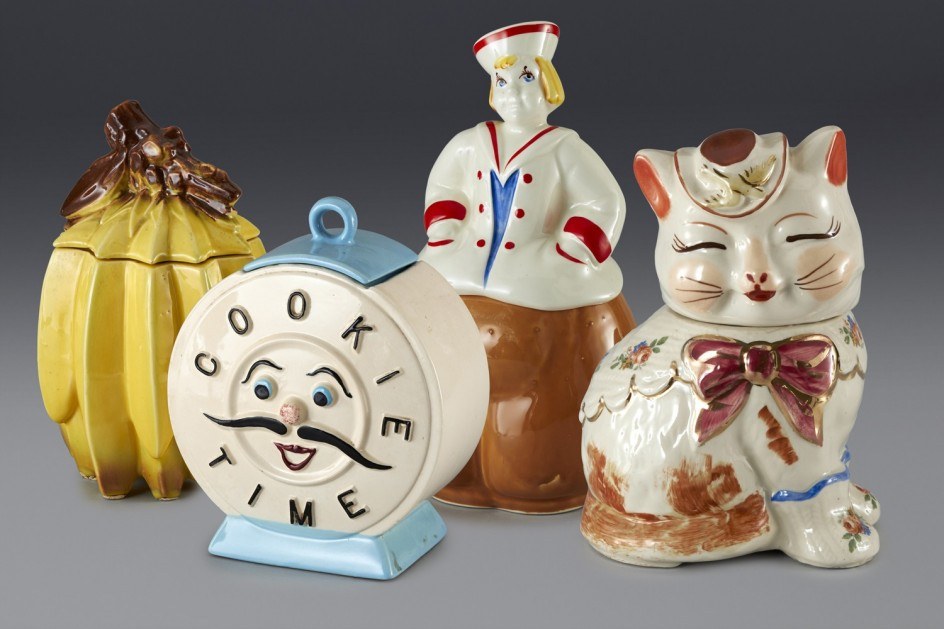
It was the 1988 auction of Andy Warhol’s collection that launched the market in collectible cookie jars. Image courtesy of www.lifestyleasia.com.
Back story is money.
In 2019 dollars, each of the jars sold for over $3,000. But before Andy Warhol brought them home, they were just run-of-the-mill ceramic kitsch you could easily pick up at any thrift store for a few dollars. The collection’s value had everything to do with its backstory and nothing to do with the jars themselves.
In the art and antique world, that backstory is called provenance. Provenance is simply the story of an object up until the present moment. Anything interesting that happened to an object — even its partial destruction as the auction gavel falls — adds to its provenance and, therefore, its worth.
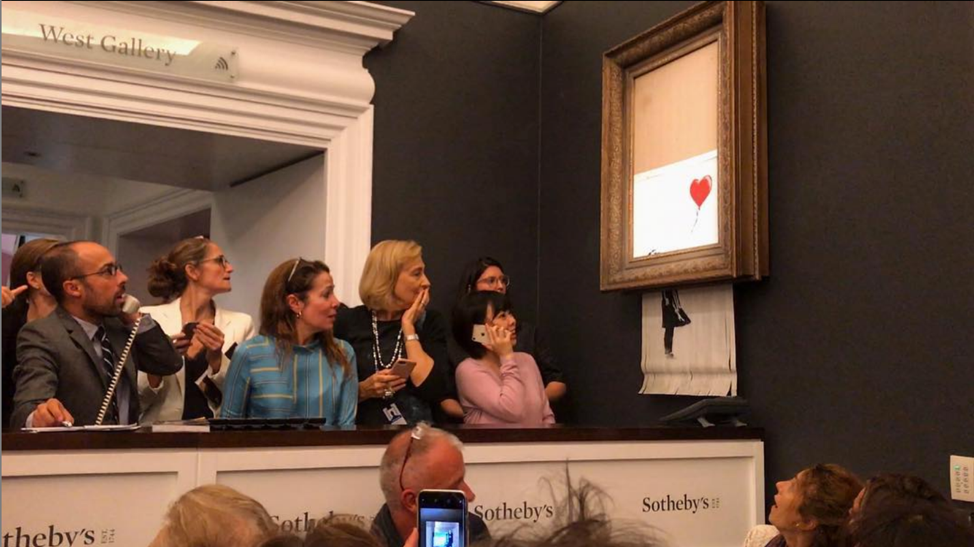 The moment Banksy shredded his Girl With Balloon it doubled in price.
The moment Banksy shredded his Girl With Balloon it doubled in price.
Performance is out. Provenance is in.
Provenance doesn’t just affect the price of antiques and art. It’s everywhere in everything we buy — even axes. Below are two brand-new axes you can buy right now on two different ecommerce sites. On the left, you can buy an axe from Lowe’s. With your $34 purchase, you get exactly four bullet points describing the material makeup and performance attributes of the axe (two of which mention the hickory handle for some inexplicable reason).

On the right is an axe sold by Best Made. With your $268 purchase you get a deep, wide-ranging story about who designed it, where the wood was felled, why the wood was chosen, the type of steel used, how the head was forged, the type of work the axe is best for, detailed care instructions, etc., etc., etc.
But the people who paid eight times the price for a Best Made axe aren’t expecting eight times the performance. If it was performance they wanted, they could buy a Husqvarna chainsaw for $159 and cut down 30 times more trees. What they’re buying is provenance — the story of the axe up until the moment they hit the buy button.
“Benefits and features don’t create meaning, stories do.”
You may scoff at people who pay $268 for an axe. But if you’re in the business of selling people things, you’d better get used to it. Today’s (and tomorrow’s) consumers want less stuff and more meaning.
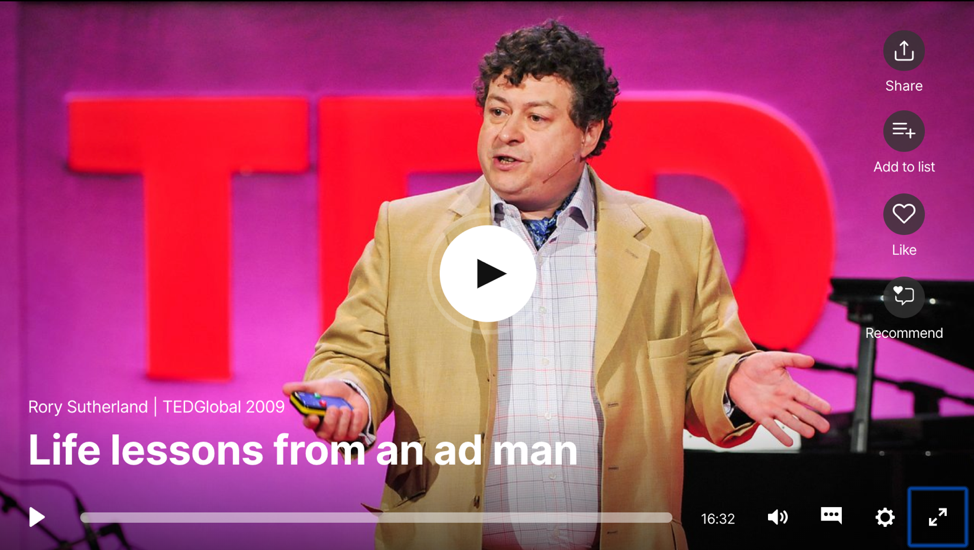 Rory Sutherland’s entertaining perspective on meaning, value and story.
Rory Sutherland’s entertaining perspective on meaning, value and story.
Stories are how we humans create meaning.
The reason provenance is becoming more and more important is because stories are how we humans create meaning. Every day we wake up and live our lives. But for the day’s events to make sense, we need to fold them into the ongoing story of our life. It’s what psychologists call our narrative identity. Events and objects that don’t help us make meaning of our life are forgotten. Events and objects that help us make meaning are folded into our self-story and remembered.
Skeptical? Think of the most meaningful moment of your life. Now try to convey that moment to someone without telling a story. You can’t. Same is true on a product page. Benefits and features don’t create meaning, stories do.
Change the story. Change the meaning. Change the value.
Stories are how we create meaning for others too. Is the couch you’re selling a “cozy escape” or a “sculptural statement piece?” The story you choose to tell about a product will affect sell-through far more than the facts that support that story. You need to know who the product is designed for and what story is most meaningful to them, then use the facts you have to tell that story.
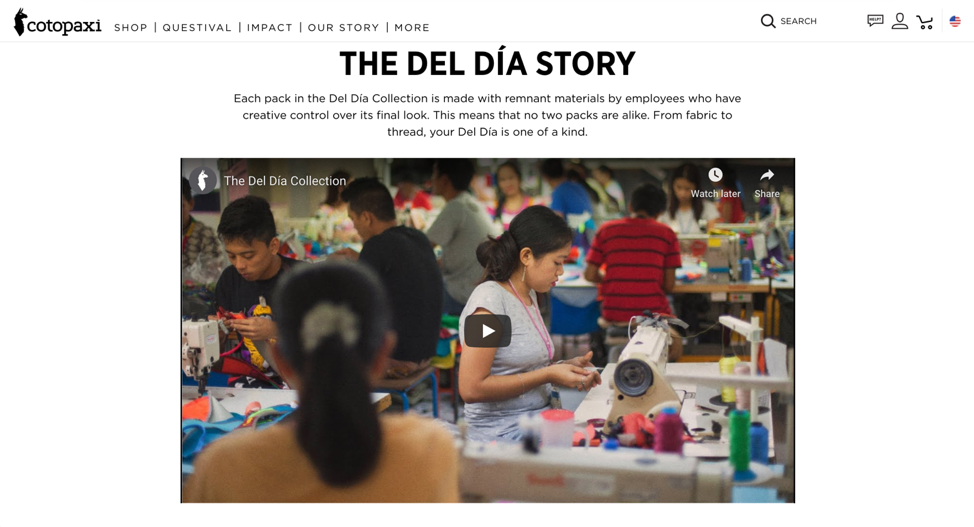 The Cotopaxi Allpa Del Día Pack is built for travel but about creativity and resourcefulness.
The Cotopaxi Allpa Del Día Pack is built for travel but about creativity and resourcefulness.
In an ecommerce-focused study by market research firm Origin, shoppers were 5% more likely to purchase from a product page with the winemaker’s story in addition to a standard description. They were also willing to pay 6% more for that bottle of wine. Origin saw a similar trend within other product categories. For instance, shoppers were willing to pay 11% more for a painting when the artist’s story was included on the PDP and 5% more for a hotel room when the product page featured stories about real guests.
What if the products you sell don’t have an interesting story?
If your sneakers are loved by Meghan Markle, your job is easy. It gets harder the more unremarkable your product. But there’s always hope. Don’t just fall back on facts. You need to tell people why those facts matter. Why was it created? Who designed it? Who was it built for? What problem does it solve? Who uses it? What conditions was it designed for? All of these lend more meaning and value to your product.
“When customers experience an interaction with a business, they want to feel as if their interaction was the result of human agency rather than some abstract automation.”
— When Customers Want to See the Human Behind the Product, Harvard Business Review
Research by Harvard Business School professors Ryan Buell and Michael Norton shows that people value products more when clear human effort was involved in its production. At a minimum, it’s important to use conversational language in your product story to let shoppers know a human was involved in the development of the product.
 A little Easter egg of a bullet point at the end lets shoppers know they’re dealing with a human.
A little Easter egg of a bullet point at the end lets shoppers know they’re dealing with a human.
Great brands build products about a story.
Companies that get eCommerce right understand that their brand should be about something larger than building great products and meeting customers’ needs. But you don’t need to figure out who you are as a brand to tell better PDP stories. You can start by designing products around a central theme, inspiration or customer insight. Danner, for instance, understands that an unrequited dream of many outdoorsy people is to hike the Pacific Crest Trail. So instead of just designing a generic collection of lightweight hikers, they built a collection inspired by what inspires their most loyal customers: hiking the PCT.
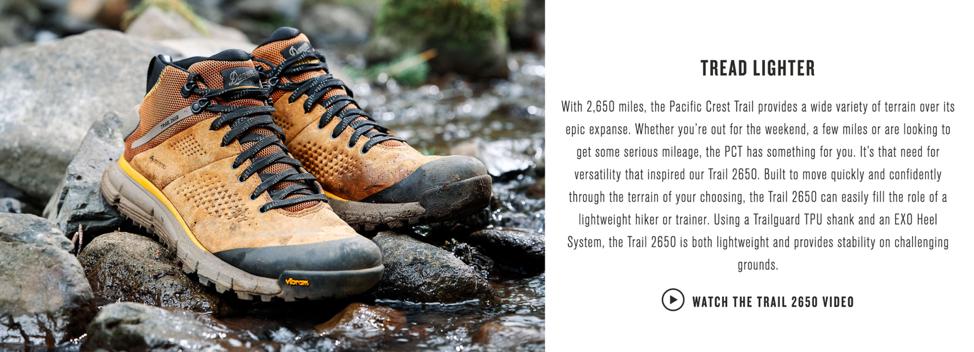
All brands tell stories about their products. Great brands make products about a story. If you understand what your products are about — not just what they do — it’s far easier to tell deep, interesting, high-converting product stories on every PDP. And once you start reaping the benefits of those product stories, you’ll never go back to dry, boring product descriptions again.
